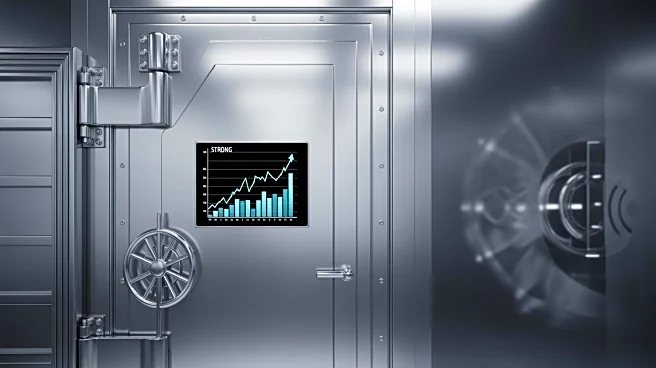What's Happening?
WesBanco, Inc., a diversified bank holding company, announced its financial results for the third quarter of 2025. The company reported a net income of $81 million, with diluted earnings per share of $0.84,
compared to $34.7 million and $0.54 per share in the same period last year. The increase in earnings is attributed to the acquisition of Premier Financial Corp (PFC) and subsequent loan growth. WesBanco's net interest income rose to $216.7 million, a 78.9% increase year-over-year, driven by higher loan and securities yields and lower borrowing costs. The company also reported a net interest margin of 3.53% and a 53.8% increase in total deposits, reflecting both organic growth and the addition of PFC deposits.
Why It's Important?
The financial results highlight WesBanco's successful integration of PFC and its strategic focus on operational efficiency. The significant increase in net interest income and deposits indicates strong growth potential and improved financial stability. The company's decision to close 27 financial centers as part of its optimization strategy reflects a shift towards digital banking, which could enhance customer experience and reduce operational costs. This development is crucial for stakeholders, including investors and customers, as it demonstrates WesBanco's ability to adapt to changing market conditions and customer preferences.
What's Next?
WesBanco plans to continue its financial center optimization strategy, which includes refreshing existing locations and enhancing digital banking offerings. The closures are expected to be completed by January 2026, with anticipated net pre-tax savings of approximately $6 million phased in during the first half of 2026. The company will host a conference call to discuss its financial results and future outlook, providing further insights into its strategic initiatives and growth plans.
Beyond the Headlines
The shift towards digital banking and financial center optimization raises questions about the future of traditional banking models. As customer preferences evolve, banks like WesBanco must balance physical presence with digital capabilities to remain competitive. This transition may also impact employment within the banking sector, as fewer physical locations could lead to workforce reductions.











